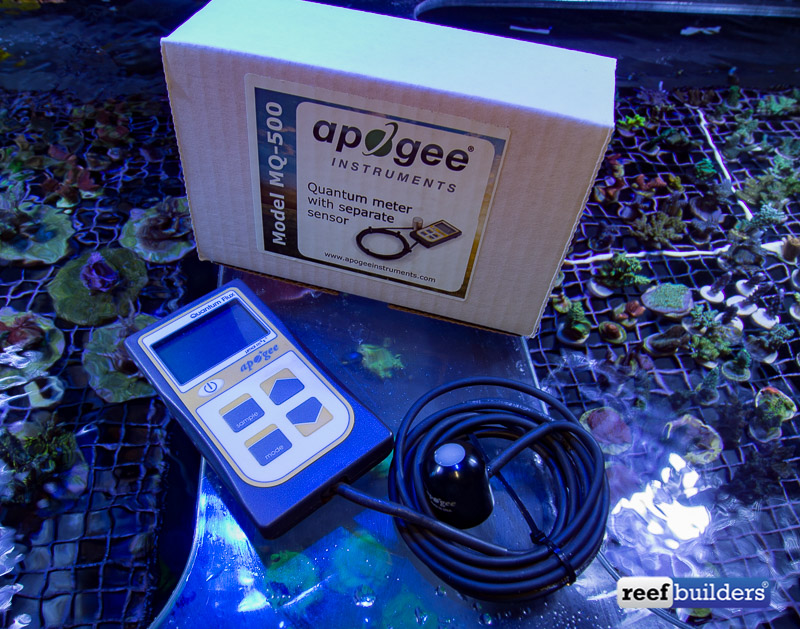The Apogee MQ-500 is the first new PAR Meter to be offered at the consumer level in quite some time. The new and improved MQ-500 from Apogee improves on the venerable MQ-200 meter which is pretty much the defacto PAR meter in the aquarium hobby.
The remote PAR sensor is completely waterproof making it an ideal device for measuring PAR right within our aquariums. The logger/reader for the Apogee MQ-500 is virtually identical to its predecessor with only a couple slight differences.
In the MQ-500 PAR Meter the Apogee logo is slightly updated with ‘instruments’ written under the Apogee name. Furthermore the MQ-500 doesn’t have a dedicated SUN/ELEC mode for making measurements either in sunlight or under artificial (electric) lighting like the MQ-200.

By far the biggest difference between Apogee’s MQ-200 and MQ-500 meters it the completely new sensor which is bigger, taller, and more importantly, more accurate and sensitive to the opposite ends of the PAR spectrum. The MQ-500 from Apogee has a much larger sensor area too, with approximately double the diameter of the MQ-200 sensor.
This increased surface area of the Apogee MQ-500 PAR Sensor is supposed to read more of the light, especially in the blue end of the spectrum, which is quite important in our windex-blue, LED lit aquariums.We tested the Apogee MQ-200 and MQ-500 side by side under different channels of LED colored light of a Radion and found quite a significant difference in measurements. The MQ-200 read higher especially under UV, Blue and Royal Blue channels of the Radion XR30w Pro 3rd Gen, slightly higher under white and green light, and only under red light did the newer MQ-500 give a higher PAR measurement.
Although the MQ-200 is not as sensitive in the narrower wavelengths of blue light as the spectrum gets closer to 400nm, apogee has actually offered post-measurement correction factors. These correction factors are necessary for using their Apogee meters under lighting with narrowband peaks of lighting, like those you would expect to see in LED-lit aquaria.
We’re still getting a feel for how the MQ-500 functions compared to the MQ-200 and we’ll revisit this device with a more in depth review. The moral of the story is that you can’t just get a meter and log its measurements as 100% accurate without a greater understanding of how these devices work, and how they respond to the wavelength of light you are measuring.



